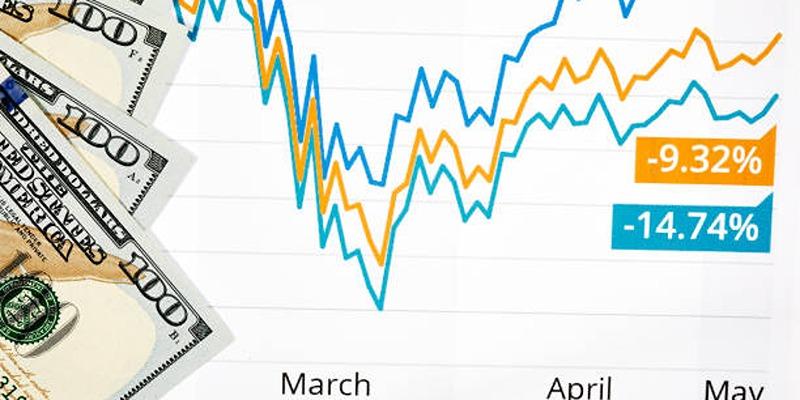"Top Line vs. Bottom Line: Key Indicators of Financial Performance"
Understanding your businesss financial health can be as simple as deciphering key metrics on an income statement. The income statement, sometimes known as the profit and loss statement, is a vital report that showcases the financial performance of a company over a specific accounting period. Within this document lie two significant linesthe top line and the bottom linethat not only define your businesss current state but also pave the way for predictive insights into its future trajectory. In this deep-dive exploration, we'll unpack the treasured insights that the top line and bottom line of your income statement offer, empowering you with the understanding to make informed financial decisions.
Revenue and Its Analytics
At the very top of your income statement, you'll find the total revenue. This figure represents the money earned by the company from its operating activities. Analyzing the top line is crucial as it provides insights into the company's sales performance. It's the lifeblood of your business, and its growth or decline can tell you a lot about market demand, price competitiveness, and consumer behavior.
Revenue Streams and Diversification
A closer look at the revenue streams can highlight areas of strength or vulnerability. Diversification within these streams can signify a robust and resilient business model, better insulated against market fluctuations or unexpected shocks. It also indicates a business's ability to leverage multiple products or services to maximize its sales potential.
Gross versus Net Revenue
Understanding the distinction between gross and net revenue is essential. While gross revenue reflects the total revenue before any operating costs or expenses are subtracted, net revenue is the amount that's left after such costs are accounted for. Tracking trends in both can help in assessing the efficiency and profitability of different business segments or product lines.
The Bottom Line Deconstructed: Profits and Their Variants:

The bottom line of your income statement is where your business's profitability is laid bare, through figures like operating income, net income, and earnings-per-share (EPS). These figures are more than just accounting jargonthey are a testament to your company's financial prowess.
Operating, Net, and EBITDA Margins
Examining the operating and net income margins gives a clear picture of your company's profitability, considering all costs and expenses. Similarly, the EBITDA margin (Earnings Before Interest, Taxes, Depreciation, and Amortization) can be a valuable tool for comparing profitability between companies since it removes the effects of financing and accounting decisions.
Growth in Net Profits
A growing net profit typically signifies a healthy, thriving company. However, identifying the source of this growth is imperative. Whether through improved operational efficiencies, cost-cutting measures, or revenue growth, sustainable profits are achieved by balancing growth with smart financial management.
Key Indicators of Financial Performance:
Profitability Ratios:
Profitability ratios such as Return on Assets (ROA) and Return on Equity (ROE) can be used to evaluate how efficiently a company is utilizing its assets and equity to generate profits. Comparing these ratios against industry benchmarks or competitors can provide valuable insights into your business's performance.
Liquidity Ratios:
A company's ability to meet its short-term financial obligations is crucial for maintaining its operations. Liquidity ratios, such as the current ratio and quick ratio, provide an overview of a company's ability to convert assets into cash quickly, enabling it to cover its liabilities.
Solvency Ratios:
Solvency ratios measure a company's long-term financial stability by evaluating its debt levels in relation to equity. These ratios, such as debt-to-equity and interest coverage, can give a clear indication of a business's ability to meet its long-term obligations and manage financial risk.
The Narrative of the Income Statement:
Together, the top and bottom lines of your income statement weave a story of your business's financial performance. They depict the trajectory of your revenue and profits, acting as windows into the companys past and into its future potentials and pitfalls.
Performance Indicators and Decision-Making
Performance indicators derived from the income statement are not merely numbers on a page; they are insights into strategic decision-making processes that can dictate the future of a business. For instance, a consistent upward trend in the top line suggests a growing market demand or effective marketing strategies, potentially indicating the right timing for expansion or investment in new product lines. Conversely, shrinking bottom line metrics might signal operational inefficiencies or cost management issues that require immediate attention to prevent longer-term financial deterioration.
Strategic Implications
The strategic implications of understanding and analyzing the top and bottom lines extend far beyond mere numbers on a financial statement. They serve as critical inputs for strategic decision-making, shaping the future path of businesses. For instance, a consistent increase in the top line suggests market acceptance and could potentially lead to expansions or diversifications into new markets or product lines. Conversely, a stagnant or declining top line might prompt a company to rethink its product offerings, marketing strategies, or even explore cost reduction initiatives to maintain profitability.
Driving Healthy Growth:

Predictive analysis using different scenarios such as break-even, lean times, and high-growth forecasts can help in charting a course for sustainable business growth. By leveraging these scenarios against your income statement, you can anticipate the outcomes of different strategic choices and adjust your plan accordingly.
Sensitivity Analysis
Conducting sensitivity analysis on your net profits can prepare your business for uncertain economic conditions. By evaluating how changes in key metrics such as price, volume, and costs affect the bottom line, you can develop a more resilient strategic map.
Utilizing Technology
The advent of advanced financial software and machine learning tools has revolutionized the way companies analyze their financial health. Incorporating these technologies can lead to more accurate predictions and allow for deeper analysis of top and bottom-line figures.
Conclusion:
The top and bottom lines of an income statement are the backbone of a company's financial story. Through careful analysis and strategic decision-making, these figures can guide businesses towards sustainable growth and success. By understanding the nuances of these numbers and utilizing technology to their advantage, companies can gain a competitive edge in today's rapidly evolving market landscape. And with continuous learning and adaptation, businesses can stay ahead of the curve and achieve long-term financial stability. So, it is imperative for companies to consistently monitor and analyze their top and bottom lines to make informed decisions that drive healthy growth. As the old saying goes, "what gets measured gets managed," so let your income statement be a powerful tool in managing your business towards financial prosperity.
On this page
Revenue and Its Analytics Revenue Streams and Diversification Gross versus Net Revenue The Bottom Line Deconstructed: Profits and Their Variants: Operating, Net, and EBITDA Margins Growth in Net Profits Key Indicators of Financial Performance: Profitability Ratios: Liquidity Ratios: Solvency Ratios: The Narrative of the Income Statement: Performance Indicators and Decision-Making Strategic Implications Driving Healthy Growth: Sensitivity Analysis Utilizing Technology Conclusion:
By Kelly Walker : Nov 19, 2024
Is a Personal Loan Right for You? Top Reasons to Consider
Explore why taking out a personal loan could be a smart move for your finances and future. Learn about the benefits and scenarios where a personal loan could be your best option.
Read More
3122

By Rick Novak : Dec 19, 2024
Planning for Retirement: How Much Money is Enough
How Much Money You Need for Retirement: Tips for Calculating Your Savings Goal and Ensuring Financial Security in Your Golden Years
Read More
3940

By Rick Novak : Aug 14, 2024
The Pros and Cons of Holding a Day Trading Position Overnight
Should you hold a day trading position overnight? Explore the risks and potential rewards of overnight trading in this informative article.
Read More
11253

By Rick Novak : Sep 30, 2024
How Bonds Affect the Stock Market: Everything You Need to Know
This article provides a detailed overview of how bonds affect the stock market and their mutual relationship
Read More
14263

By Rick Novak : Oct 10, 2024
Explaining Trailing Stop Loss in Day Trading
How a trailing stop loss can help you in day trading. Learn how it protects your profits and reduces losses in fast-moving markets.
Read More
4988

By Rick Novak : Aug 20, 2024
Debt and Credit Obsolescence and How to Survive It
Removing debt and credit score enhancement requires budgeting, spending only what you earn, and paying with cash or debit. Credit-checked services may also be limited
Read More
11719

By Rick Novak : Dec 27, 2024
The U.S. Treasury Yield Spread What You Need to Know
Discover what the U.S. Treasury yield spread is, how it impacts the economy and financial markets, and why it's important for investors.
Read More
14084

By Kelly Walker : Aug 05, 2024
Reasons to Avoid Index Funds
Thinking of blindly investing in index funds? Here are some potential risks to consider before you make that decision. Find out the reasons why you should avoid index funds and explore alternatives that may be a better fit for your investment needs!
Read More
2656

By John Davis : May 18, 2025
What Are The Key Differences Between Exchange-Traded Funds (ETFs) And Index Funds?
Exchange-traded funds (ETFs) and index funds allow investors to purchase a diversified portfolio of securities. While index funds are mutual funds meant to passively track a specific market index, exchange-traded funds (ETFs) are traded like individual stocks. They can be managed either passively or aggressively. ETFs typically have lower entry thresholds than index funds, and ETFs change more frequently.
Read More
14028

By Rick Novak : Dec 29, 2024
Things to Know Before Buying a Short Sale on a House
Check the property's value and the home for damage before buying shop board shorts on sale. Short sales may also require quick action.
Read More
5501

By Rick Novak : Dec 05, 2024
Trading with Momentum: An Overview
On paper, momentum investing is less of a conscious strategy and more of a reactive response to market news. The traditional proverb on Wall Street that you should "buy cheap and sell high" runs opposite to the approach of selling underperforming companies and purchasing winning ones. This technique, which may appear enticing at first, is counterproductive
Read More
12954

By John Davis : May 18, 2025
How To Stay On Track With Your Financial Plan Resolves For The New Year
New Year's financial resolutions are more likely to be kept if they involve setting realistic and measurable goals, creating a budget, automating savings, reducing debt, boosting income, reviewing insurance, seeking professional guidance, and keeping motivation levels high. If you follow these steps, you'll be on your way to building the financially stable future you've always imagined.
Read More
13319